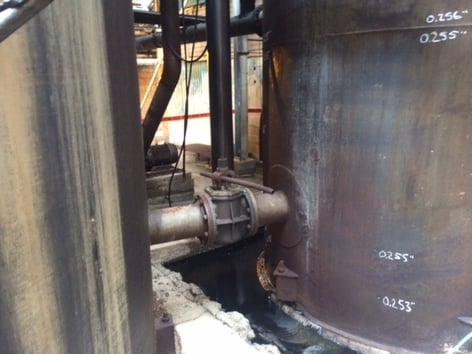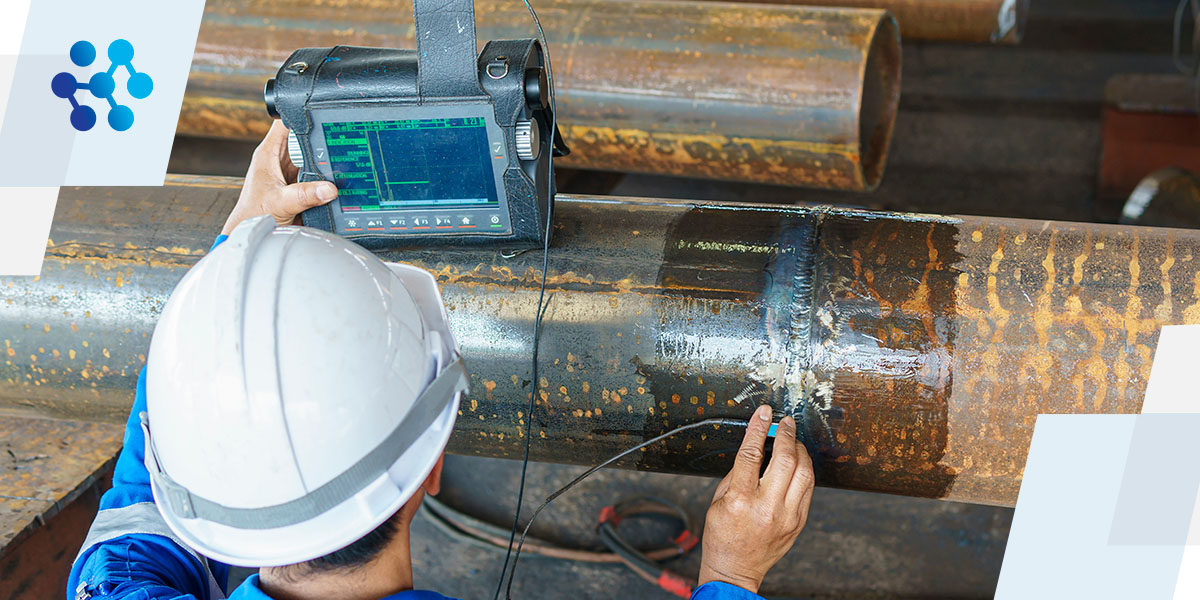How to Ensure Compliance with Tank Welding Inspection Specifications
A Thorough Review of Container Welding Inspection Criteria and Methodologies for Improved Weld Top Quality and Efficiency
The significance of welding inspection standards in the manufacturing of storage tanks can not be overstated, as they offer as the backbone for making sure weld stability and functional integrity. Different evaluation techniques, including aesthetic evaluations and progressed non-destructive screening approaches, are crucial in recognizing potential imperfections that might jeopardize efficiency. Sticking to regulative standards not only boosts weld quality yet also reduces the threat of expensive failings. As we discover the nuances of these techniques, it comes to be essential to consider exactly how a methodical technique can transform existing methods and lead to significant enhancements in outcomes.
Importance of Welding Evaluation Specifications

Welding evaluation standards incorporate a variety of criteria, including product specifications, welding treatments, and credentials of employees associated with the welding process. By enforcing these criteria, organizations can methodically determine and remedy prospective problems, therefore lowering the likelihood of costly repairs or devastating failures. Rigorous examination practices promote a society of accountability and accuracy, motivating welders to maintain high degrees of craftsmanship.

Typical Welding Examination Methods


Ultrasonic Evaluating (UT) is an additional prevalent strategy, utilizing high-frequency sound waves to find interior imperfections that may not show up on the surface. This method is particularly reliable for recognizing gaps or inclusions within the weld steel. Magnetic Bit Examining (MT) is likewise widely utilized, particularly for ferromagnetic materials, as it discloses surface area and near-surface problems via the application of magnetic fields and ferrous fragments.
Additionally, Liquid Penetrant Testing (PT) spots surface-breaking problems by using a penetrant to the weld and then utilizing a programmer to extract the penetrant. Each of these techniques adds to a thorough evaluation strategy, guaranteeing that welds satisfy the rigorous top quality requirements called for in tank building and construction.
Regulative Standards and Compliance
Regulative requirements and compliance are vital parts in making sure the safety and security and dependability of bonded structures in container building - Tank Welding Inspection. These requirements serve to develop minimum demands for material buildings, welding procedures, and examination practices, thereby reducing the risk of structural failures and enhancing total performance
Key companies, such as the American Culture of Mechanical Engineers (ASME) and the American Welding Society (AWS), offer standards that are widely embraced in the sector. Compliance with these standards not just makes sure adherence to finest methods however likewise fulfills lawful and contractual obligations, protecting the rate of interests of stakeholders.
Regulative bodies commonly mandate adherence to certain codes, such as ASME Code Section IX for welding qualifications and API 650 for welded containers. These codes lay out needs for welding strategies, qualifications of workers, and screening techniques to validate weld honesty.
Regular audits read this post here and inspections are crucial to maintaining compliance, as they help recognize deviations from established requirements. Non-compliance can result in significant penalties, task delays, and security threats. Thus, a durable understanding of regulative requirements and a dedication to conformity are extremely important in achieving high-grade and long lasting welded tank structures.
Non-Destructive Evaluating Approaches
Just how can the integrity of bonded structures be ensured without creating damage? Non-destructive testing (NDT) methods provide a robust service, allowing assessors to assess weld quality without compromising the product - Tank Welding Inspection. Among the most usual NDT methods are ultrasonic screening (UT), radiographic screening (RT), magnetic particle screening (MT), and dye penetrant testing (PT)
Ultrasonic screening utilizes high-frequency sound waves to discover internal problems and identify product buildings. It gives precise measurements and is especially efficient for thick materials. Radiographic testing includes passing X-rays or gamma rays via the weld, developing photos that expose structural problems such as cracks or spaces. This approach is very useful for analyzing the stability of complex welds.
Magnetic particle testing is suited for ferromagnetic materials, where magnetic areas disclose surface area and near-surface stoppages. Color penetrant screening uses a fluid color to highlight surface-breaking imperfections, making it a reliable approach for non-porous materials.
Each of these NDT approaches has unique benefits, allowing for detailed assessments tailored to certain products and welding procedures. By executing these methods, industries can make sure the dependability and safety and security of welded structures, eventually improving general efficiency.
Enhancing Weld Top Quality With Evaluation
Efficient inspection plays a vital function in boosting weld high quality, offering as a crucial checkpoint in the fabrication process. By identifying prospective flaws early, assessments reduce the risk of compromised architectural stability and make certain compliance with market requirements. Employing a mix of aesthetic examinations, non-destructive testing (NDT) methods, and mechanical assessments, inspectors link can identify concerns such as porosity, splits, and insufficient combination.
Applying a robust inspection procedure not only enhances the overall high quality of welds yet additionally promotes a society of responsibility amongst welders and fabricators. Routine training and certification of evaluation employees guarantee that they are outfitted with the essential skills to identify and attend to possible issues effectively. This aggressive technique reduces rework and connected expenses, inevitably contributing to forecast performance.
Additionally, detailed paperwork of evaluation findings offers useful understandings into reoccuring issues, promoting constant renovation in welding practices. By leveraging innovative innovations, such as automated ultrasonic testing or digital radiography, weld top quality can be improved via a lot more accurate analyses. look what i found In final thought, a strenuous inspection process is vital in accomplishing premium welds, making sure safety and security, reliability, and durability in container construction.
Conclusion
Finally, the implementation of rigorous storage tank welding inspection requirements and approaches is crucial for ensuring weld stability and performance. By using a mix of visual inspections, non-destructive testing approaches, and adherence to regulative requirements, companies can efficiently identify and mitigate possible flaws. Cultivating a culture of accountability amongst welders further improves the top quality of welding procedures. Ultimately, these methods add to lowered structural failures, lower repair work prices, and enhanced functional effectiveness within the sector.